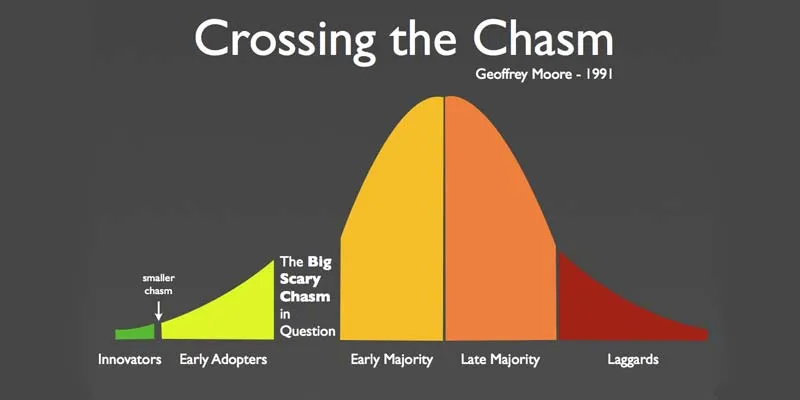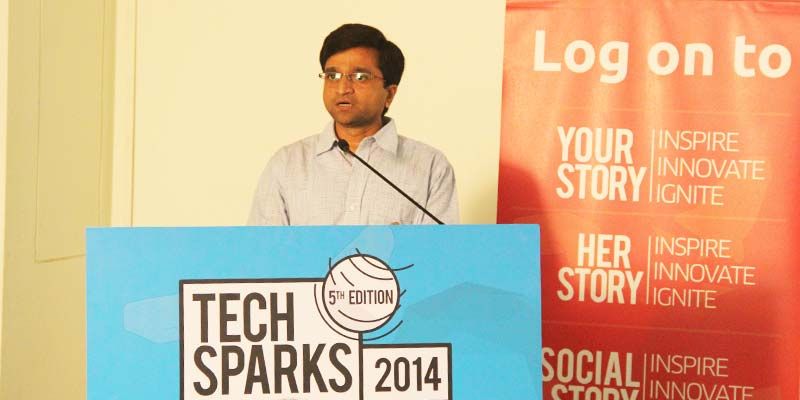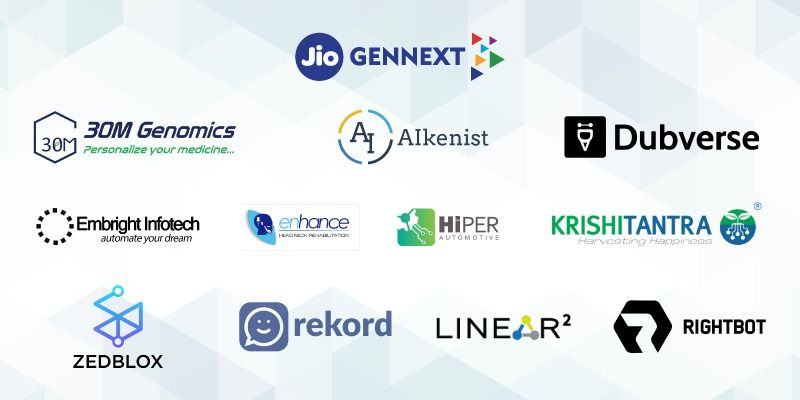Druva’s tryst with crossing the chasm
The dictionary meaning of the word ‘chasm’ is the profound difference between people, viewpoints or feelings. In his book, ‘Crossing the Chasm’, Geoffrey Moore has used the word chasm to refer to the gulf between two marketplaces encountered by a product startup in scaling up.
He has demonstrated that the first marketplace is an early market dominated by early adopters and insiders (a few visionary customers) who are quick to appreciate the nature and benefits of the new development. The second one is a mainstream market representing “the rest of us,” (predominantly pragmatists) people who want the benefits of new technology but who do not want to “experience” it in all its gory details.
The gap between these two markets is so significant as to warrant being called a chasm, and crossing this chasm must be the primary focus of any long-term high-tech marketing plan. A successful crossing is how high-tech fortunes are made; failure in the attempt is how they are lost.

If Milind Borate, Co-founder and CTO of Druva Inc, is to be believed, then the 1000 cr+ valued Druva is still crossing the chasm. Speaking at TechSparks Pune recently, Milind shared what could be potentially the biggest threats to scaling up a startup and tips to overcome them. Here’s everything you should know about the chasms your startup will face and how to act on them.
Related read: The Druva Growth Story: 3,000+ customers, $65 million+ in funding and big data pastures ahead
The cracks in the curve
Many business plans are based on a traditional technology adoption life cycle, a smooth bell curve of high tech customers, progressing from innovators, early adopters, early majority, late majority, and finally laggards. In turn, this model becomes the foundation for a high-tech marketing model which says the way to develop a market is to work the curve from left to right, progressively winning each group of users, using each "captured" group as a reference for the next.
According to Moore, there are cracks in the curve between each phase of the cycle representing a disassociation between any two groups; that is, "the difficulty any group will have in accepting a new product if it is presented the same way as it was to the group to its immediate left." The largest crack, so large it can be considered a chasm, is between the early adopters and the early majority. Many high tech ventures fail trying to make it across this chasm.
Marketing chasm
Milind said,
It is impossible to target an entire market at once. You have to find and target one segment at a time and then move on to the next segment once the first one is very well taken care of. The best way to go about is to find the early adopters and reach out to them by all possible means.
Product chasm
Milind stated, “Techies will look into your product only if you’ve an advantage in unique select points. It is always recommended to validate a product with early adopter and then build a MVP.”
The visionary guy will invest in your product for future while the pragmatists want everything now. One has to make sure that trivial things like deployment of the software by a customer is taking place cleanly for pragmatists.
Talent acquisition chasm
Here are four kinds of hires in the jobs market:
- Visionary: They work for their own growth.
- Pragmatist: They want salary, Esops and complete support from the organization. They want things in structure, e.g. they would prefer using outlook than gmail. If they are asked to come early, they won’t be satisfied with only lunch, they want breakfast as well.
- Conservatives: They do not take up a startup job and rather opt for a corporate job.
- Skeptics: On a lighter note, Milind shared that they can be found only in government jobs.
Related read: [Culture Series] A young team building products for the globe- Druva Technologies
Process chasm
A company can do without processes in place if it has up to a 100 employees. Beyond that (more than 100 employees), the company will face the chasm because efficiency decreases drastically while crossing this gap. The processes help everybody in the team in knowing what’s happening. Tools like dashboard keep everyone in the team aware of who’s doing what. This in turn helps the sales, and marketing teams get an idea of how far they’re from the product release.
How to react to a chasm?
Milind had a simple answer to this question,
Cross the chasm when you come to it!

How is Druva crossing the chasm?
Milind said,
Backup is crossing the chasm for us. We believe that we haven’t yet crossed it. On our journey, pragmatists are still not there while our visionaries, the techies, understand and are interested in shifting to cloud. Pragmatists are still pondering over how they can move from data centers to cloud so smoothly. The day they will get their answers will be the day when we cross our chasm.
We would like to believe that somewhere Druva Inc is on the verge of crossing the chasm. The data backup pioneer has been constantly innovating products in this space and leading by example. But do you know that there was a time in Druva’s journey when Milind almost gave up?
Watch this space for the next feature on why he almost gave up and how he overcame it.
We’ll also talk about how Flipkart crossed their chasm and won one market after another.
A big thanks to all the sponsors and partners for supporting TechSparks 2014 – Sequoia Capital, AWS, Intel, DSOA, Verisign, Stanford Ignite, Target, Intuit, Brand Capital and Ola.
TechSparks is coming to Delhi, Chennai and Mumbai too. You can book your tickets here











